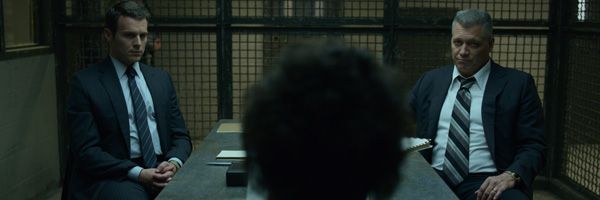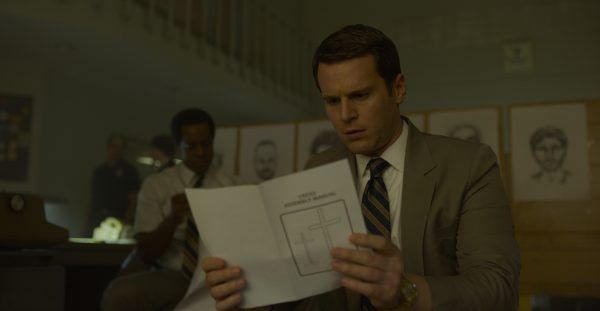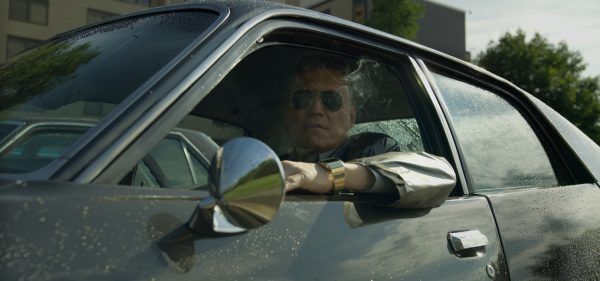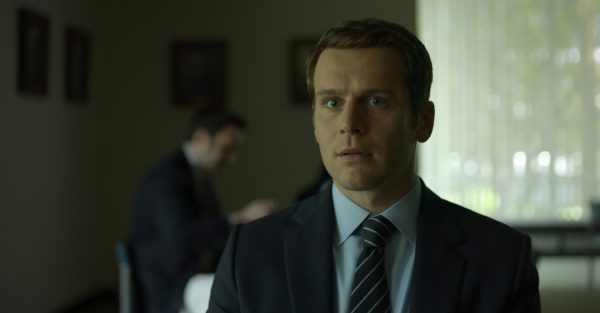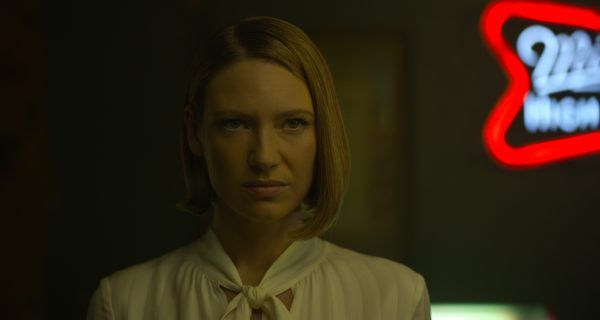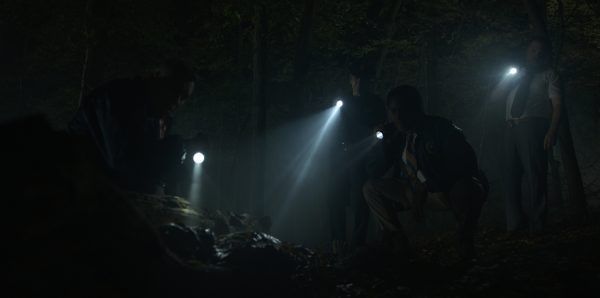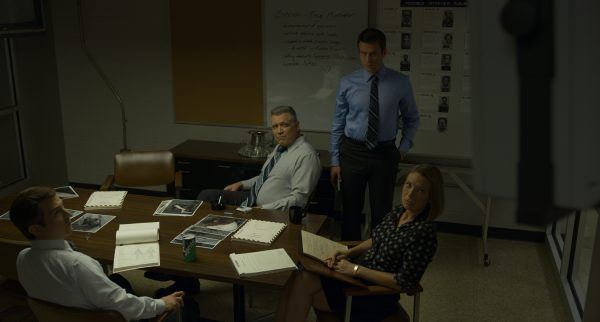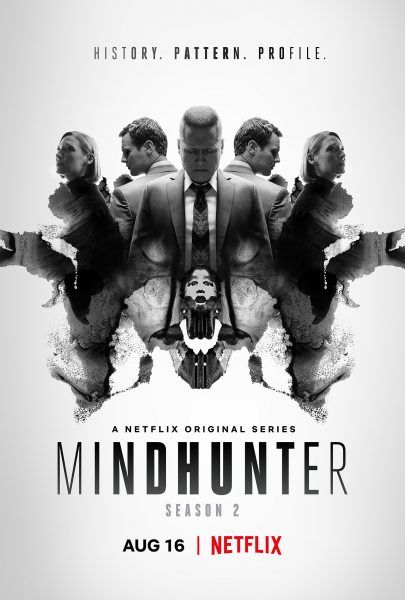Mindhunter has gotten even better in its second season. In addition to getting into the heads of a whole new crop of serial killers - including well-known names like David Berkowitz and Charles Manson, and lesser-known killers like Elmer Wayne Henley and William Pierce Jr. - our lead investigators Holden Ford (Jonathan Groff) and Bill Tench (Holt McCallany) go into the field to help with the Atlanta Child Murders. We also get a deeper look into the personal lives of Tench and Dr. Wendy Carr (Anna Torv).
While a third season of David Fincher's acclaimed series has not yet been ordered by Netflix, in an interview with THR, McCallany said that Fincher has a plan for five seasons of the show. With a plethora of disturbing serial killers, there is no shortage of storylines out there, and as Season 2 showed us, everyone is fascinated by serial killers.
After reading the interview with McCallany, and Collider's exclusive interview with John Douglas (the FBI profiler whose book, Mind Hunter, is the basis for the series, and whom the character Holden Ford is based on), plus my own frighteningly extensive knowledge of serial killers, I have compiled a list of potential serial killers we might see in Season 3, and some information about their horrific crimes.
Robert Hansen
Known as the Butcher Baker because he was a professional baker, Robert Hansen was responsible for the kidnap, rape, torture, and murder of at least seventeen women in the desolate Alaskan wilderness. Victimizing mostly sex workers between 1977 and 1983, Hansen would pick up his victims with a sexual proposition, then reveal a gun to make them as scared as possible, before taking them home to rape and torture them. After that, he would fly them in his private plane to his remote cabin in the woods. He would strip them naked, blindfold them, and set them free in the forest - then hunt them like animals.
Douglas was brought in to consult on the case after one victim, Cindy Paulson, was able to escape Hansen before he could take her to his cabin. When police questioned Hansen, his (false) alibi and meek manner took him out of the suspect pool. It was Douglas' profile on Hansen that led investigators to rethink Hansen as a suspect. His alibis finally admitted they lied, and warrants were served on Hansen's property and private plane. In Hansen's home, investigators discovered guns that matched the suspected murder weapons, as well as trophies from many of his victims, and a map with his victims' graves marked.
Hansen was arrested on kidnapping, assault, theft, and fraud charges. Once the ballistic tests came back, he was also charged with four murders for the corpses police had evidence on. Realizing he didn't have a way out, Hansen pled guilty to all charges, in exchange for serving time in a federal prison. In addition, he agreed to show investigators where his other victims were buried, as long as he wasn't charged with those murders. He revealed a total of seventeen graves, twelve of which investigators did not know about. Hansen is suspected in at least four other murders, which he denied. He died in prison in 2014 due to undisclosed natural causes.
Ted Bundy
Ted Bundy is one of the most infamous serial killers because, by all accounts, he was very normal. He was a good-looking law student with no criminal record, who often lured young women away by pretending to be injured and in need of assistance. Bundy was highly intelligent, patient, methodical, and organized.
Bundy was originally convicted only of kidnapping. After a four day bench trial in Utah in 1976, he was found guilty and sentenced to up to fifteen years in prison. Before the year was over, he was charged with the murder of Caryn Campbell and eventually transferred to Colorado to stand trial. In 1977, he escaped during a preliminary hearing, and was on the loose for six days before he was captured. He escaped again on December 30th, 1977, and it was seventeen hours before jailers even realized he was gone. He was finally captured on February 12th in Florida, leaving at least three dead coeds in his wake, and another three who had been badly beaten. He was eventually found guilty of all six crimes, and sentenced to death for the murders.
In all, Bundy confessed to thirty murders, though most experts suspect that the total was much, much higher - over 100 at least. He would brutally rape, torture, and kill his victims, and often return to the dump site to molest the corpses. He also decapitated a number of victims, taking their heads home for weeks before disposing of them. The thirty confirmed kills spanned 1974 through 1978 across seven states. He was executed in the electric chair in 1989.
The Green River Killer
Gary Ridgway is the second most prolific serial killer (after Samuel Little) in the United States, based on convictions. He was convicted of forty-nine murders, but confessed to as many as seventy-one. Known as the Green River Killer, because his victims always turned up along the Green River in Washington state, Ridgway would pick up sex workers and the occasional runaway, rape them, then strangle them from behind. He would sometimes return to the dump site to have sex with the corpses; not because he was aroused by dead bodies, but because it prevented him from having to go out and find a new victim.
Ridgway is the one killer that Douglas really wanted to interview. He still might, as Ridgway is still in prison and accessible. Douglas worked on the case, but a case of viral encephalitis and PTSD-related stress nearly killed him at the time, forcing him to slow down. As far as appearing in Mindhunter Season 3, it would have to be done in a similar way that BTK has been presented the past two seasons, as a bookend that isn't fully explored. Ridgway's murders began in 1982, which could fit with the timeline (Season 2 was set around 1981), but he wasn't arrested until 2003. Ridgway pled guilty to forty-eight murders (an additional count was later added) in exchange for life in prison - no death penalty. The deal was a good one, as prosecuting attorney Norm Maleng only had evidence to convict on seven murders.
John Wayne Gacy
Douglas was involved in the John Wayne Gacy case, one of the most notorious serial killers of all time. He was convicted of several counts of sexual assault against young men before he graduated to murder. Gacy would pick up young men and boys, lure them home for a night of drugs and sex, then strangle or suffocate them. Most of his victims were buried in the crawlspace of his home. In 1980, he was convicted of thirty-three counts of murder. Twenty-six of those victims were found under his floorboards. He was executed for his crimes in 1994.
What made Gacy a cause celeb was the fact that he was also a registered clown. Pogo the Clown was well known in his suburbs of Chicago. He performed at parties and in parades as well as volunteered at children's hospitals and political fundraisers. He is well known for saying "clowns can get away with murder" and was dubbed the Killer Clown by the press, yet he never murdered anyone while dressed as a clown. Later, in prison, he was known to paint pictures of clowns.
The Hillside Stranglers
This infamous pair of cousins terrified Los Angeles in the late 1970s with at least ten murders in the span of four months. Kenneth Bianchi moved from New York to Los Angeles, where he bunked with his cousin, Angelo Buono. Short on cash, the pair kidnapped a pair of girls with the plan to pimp them out. The girls eventually ran away, and when they went out to collect a couple of new prostitutes, things got out of control. The pair found they enjoyed killing, and started kidnapping, raping, torturing, and murdering young women they picked up on the infamous Sunset Strip. As the police closed in on the pair, Bianchi fled to Washington State, where he committed two additional rape/murders before finally being captured. They were found guilty of all crimes in the most expensive trial in California history to that point, and were sentenced to life in prison.
There are several reasons why I would be surprised if the Hillside Stranglers were not part of Mindhunter Season 3. The murders are the perfect psycho-sexual case that is the focus of the Behavioral Science Unit; plus, Mindhunter hasn't interviewed a killing duo yet. Douglas really did interview Bianchi in prison, and his information is on a card on a board behind Dr. Carr in the season premiere.
Easter Eggs and Hints from Season 2
There were a number of other names on cards in that first episode. Some of them, like Gacy and Bianchi, were discussed above. Others, like William Pierce Jr. and William Henry Hance, were in Season 2. Perhaps these are Easter Eggs, hinting at who we may see.
Ronald DeFeo Jr. - In 1974, DeFeo shot his parents and four siblings in their family home in Amityville on Long Island. He was convicted of acting alone on all six murders, though his story has changed numerous times over the years, claiming he was mentally unstable; his family turned on each other; the mafia killed them; or other people pulled the trigger. A year after the killings, the Lutz family moved into the house, and left after less than a month after experiencing troubling paranormal activity that would become the basis for The Amityville Horror.
Robert Zarinsky - Zarinsky was only ever convicted of one murder, that of Rosemary Calandriello. Her body was never found, and Zarinsky was the first person in New Jersey to be convicted of a murder where no body was recovered. He spent the rest of his life in prison. In 2008, he was indicted for a 1968 murder, but died before he could be put on trial. In 2016, DNA evidence proved that Zarinsky murdered a high school student in 1965. In addition, he was the prime suspect in three other murders, spanning 1969-1974.
Edward Charles Allaway - A history of mental illness preceded Allaway's mass shooting at Cal State Fullerton. Seven people died in the shooting before Allaway, a janitor at the school, called the police and turned himself in peacefully. Though these murders did not have a sexual element, as most of the BSU's cases do, Allaway did claim that his wife was being forced to appear in pornographic movies, and some library staff would play pornographic movies before opening hours - though not ones with his wife. In all likelihood, Allaway probably suffered a psychotic break, as his wife filed for divorce not long before the mass shooting. Diagnosed as a paranoid schizophrenic, Allaway was sent to a mental institution, where he is incarcerated today.
Douglas Edward Gretzler - What began as a spree of robberies on a road trip with Willie Steelman ended with the pair murdering seventeen people across two states in less than two months. Gretzler was convicted of nine counts of first degree murder in California, then they were extradited to Arizona, where they were convicted of two additional murders, a kidnapping, and a variety of burglary and robbery charges. Gretzler was executed in 1998, while Steelman died on death row.
The first two seasons of Mindhunter are currently available to stream on Netflix.

